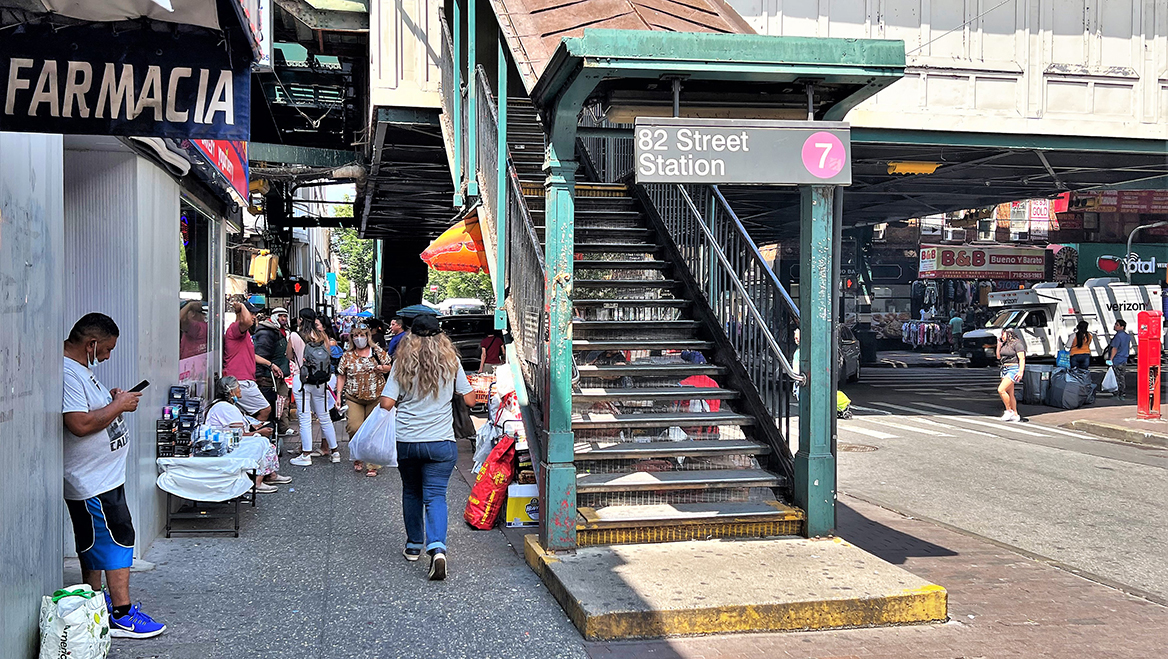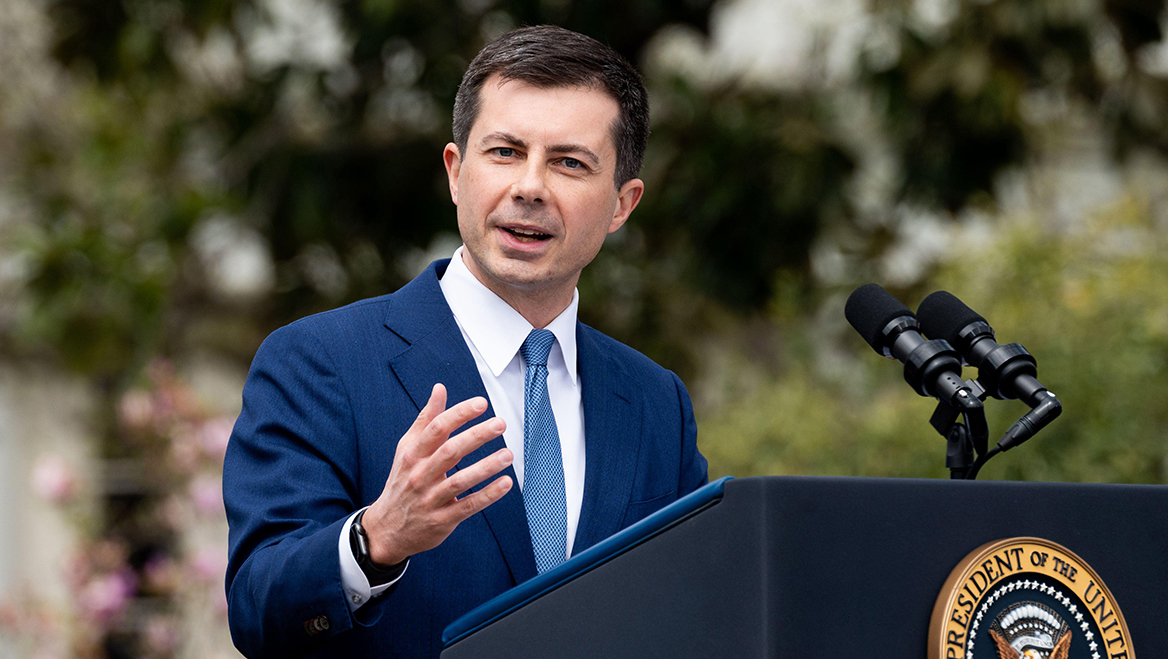Jan. 26, 2023
Planners know that mobility impacts our jobs, education, recreation, healthcare, shopping — virtually everything we do. But for many, transportation creates barriers to those opportunities, not access.
One in four U.S. adults have a disability that affects major life activities, the Centers for Disease Control and Prevention reports. Yet transportation networks, from missing stretches of sidewalk to legacy train systems built long before the 1990 Americans with Disabilities Act, often lack features like elevators that are necessary for people who use wheelchairs, crutches, and other mobility aids.
According to New York City's Metropolitan Transportation Authority, only 24 percent of New York City's train stations are considered accessible by the Metropolitan Transportation Authority — and that's not an isolated statistic. With these legacy train systems concentrated in dense urban areas like New York and Chicago, millions of people across the country lack accessible public transportation.
As secretary, Pete Buttigieg has led the U.S. Department of Transportation with powerful positive language about mobility justice and designing for people with disabilities. Recently, that's also been backed by bipartisan funding. The $1.75 billion All Stations Accessibility Program (ASAP) was created by the Infrastructure and Investment Jobs Act in 2020 to increase transportation access for people with disabilities by retrofitting transit stations with elevators and better accessibility. The same year, $27 million from the USDOT was dedicated to four projects that will incorporate innovative business partnerships, technologies, and practices to promote independent mobility.
Steve Wright, Planning's expert on universal design and planning for people with disabilities, recently caught up with Buttigieg to learn more about what the USDOT is doing to create more accessible transportation networks. The following interview has been edited for length and clarity.
WRIGHT: Accessible travel options can be the difference between making it to employment, health care, and daily needs — or not. What are your overall thoughts on the USDOT's role in removing barriers and creating inclusion for people with disabilities?
BUTTIGIEG: One of the most basic things you need in order to thrive is the ability to get to where you need to be. That is everything from educational opportunity to health care to a job. There are gaps for everybody in our transportation system, but most people can more or less assume that there's at least one way to get to where they need to go.
That's not always true for Americans with disabilities — and that's particularly something we see for wheelchair users. For the great number of different Americans experiencing disabilities, if we fail to provide the right kind of transportation connectivity, that means not only that they miss out on opportunity, but that our country and our communities miss out on what they have to contribute.
One thing that I saw early and often in my time as mayor was the importance of setting up our community so that everybody could contribute and participate. That could be a question of whether a sidewalk was designed so that it was navigable by wheelchair, or whether you had the right kind of paratransit services to get people to work.

Only 24 percent of New York City's 472 subway stations are accessible. This stop in Jackson Heights, Queens, lacks a much-needed elevator. Photo by Steve Wright.
WRIGHT: Let's talk about legacy public transit systems. Take New York City, for example. All buses are wheelchair accessible, but only a fraction of subway lines are, while elevators at stations, which are already rare, are often broken.
BUTTIGIEG: Largely thanks to the leadership of Senator Tammy Duckworth, an important provision in the infrastructure package is $1.75 billion dollars for making transit stations and rail stations accessible.
New York is a good example. It should be a transit planner's dream in the sense that even people with access to a luxury vehicle might choose to take the subway because it's just more efficient and convenient, right? So it could be the gold standard — but not everybody has access.
There are two layers of what we've got to do. The first is the threshold condition of just making sure that everybody has access. We need to also pay attention to whether it's convenient and comfortable for everyone. And that's another level that we need to build towards.
The biggest obstacle has been funding. Many transit agency leaders who very sincerely want to do the right thing have been forced into impossible decisions with their backs against the wall financially because of that lack of funding. Frankly, the $1.75 billion won't be enough on its own to resolve [the lack of wheelchair access] at every station, but it's a major investment in progress. It's going to mean that many more commuters are able to benefit and, again, be able to contribute where maybe they couldn't have before. It even changes where people have the option to live. If you [have accessible rail stations connecting your home to work and necessities], it changes all of your possibilities in life.
WRIGHT: A buckled, broken, or missing sidewalk on the way to the most accessible commuter train ever could still make that transit off limits for someone who uses mobility aids. How is the DOT working to create a seamless accessible transportation network?
BUTTIGIEG: This is where it really comes down to the influence we can have with state and local leaders, and it's considerable what we fund under our control. We are doing as much in partnership with states and cities that we can. We advance accessibility through our grant making. When we do something like Safe Streets and Roads for All, which is a new program funding [projects in many] communities, we truly are envisioning safer roads and streets for people with disabilities. Creating safe wheelchair accessibility at all intersections is a good example of what they ought to be thinking about when they design for pedestrians.
WRIGHT: Too many elected and appointed officials act like accessibility and inclusion for people with disabilities is some kind of charity or favor. How are you addressing this?
BUTTIGIEG: The cost of inaccessibility comes down hardest on the people who are directly affected by it. But it really comes down on everybody and anybody who might benefit from an invention, an innovation, that comes from a well-employed person meeting their full potential, regardless of disability.
All of us have a stake in it. The state must support a society that allows everybody to thrive. That is really what is so urgent about this, because there are many problems that society or America hasn't solved — like, we are trying to figure out nuclear fusion. But unlike particle physics, a lot of questions about accessibility have been addressed. We've figured out how to do things from curb cuts to safe transportation of people who use wheelchairs for mobility. And yet, it's not happening everywhere. So we have to work on the steps that we know have the potential to unlock a better life for so many. We must [create an environment where people with disabilities can] reach their fullest potential.




